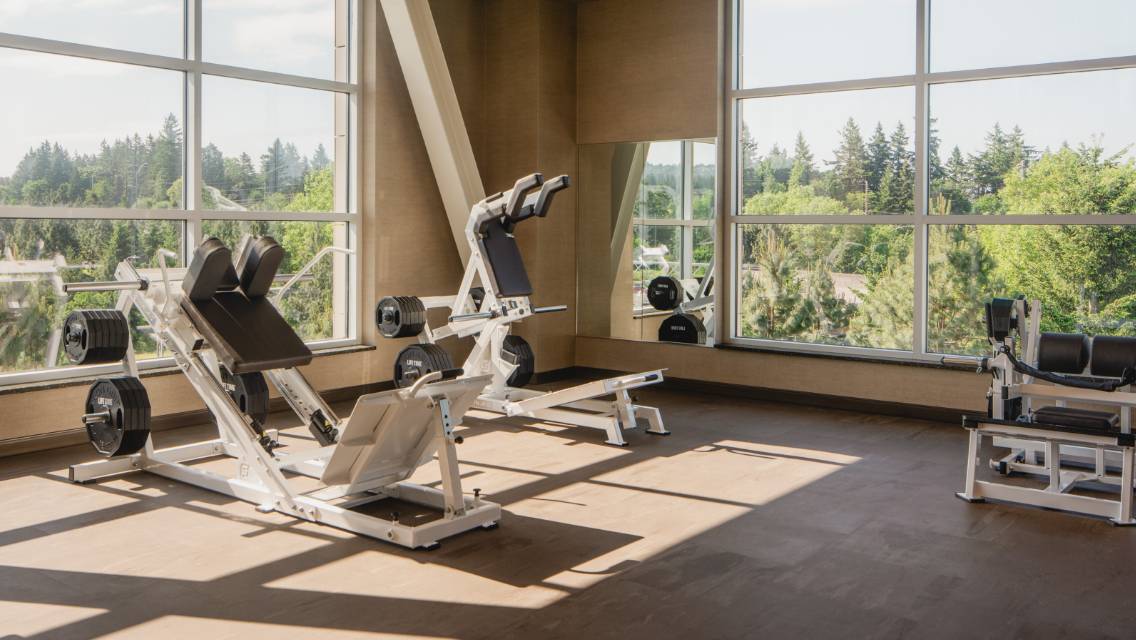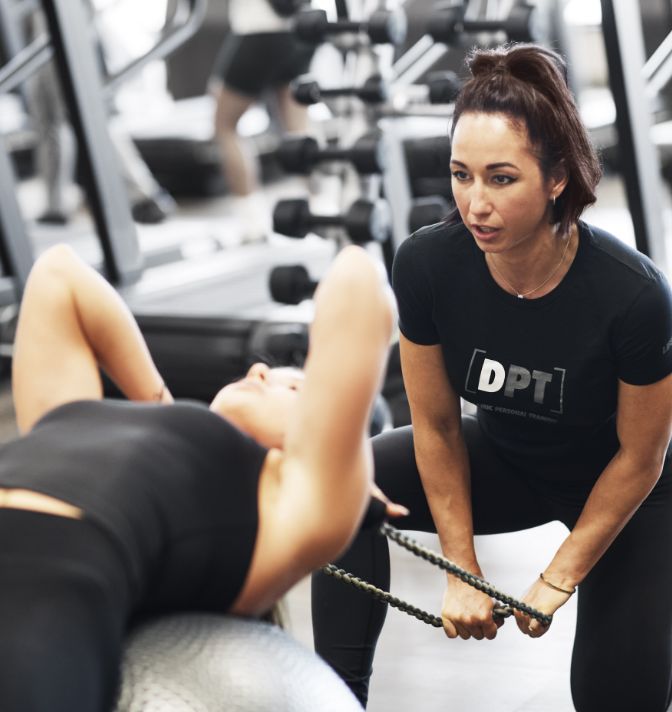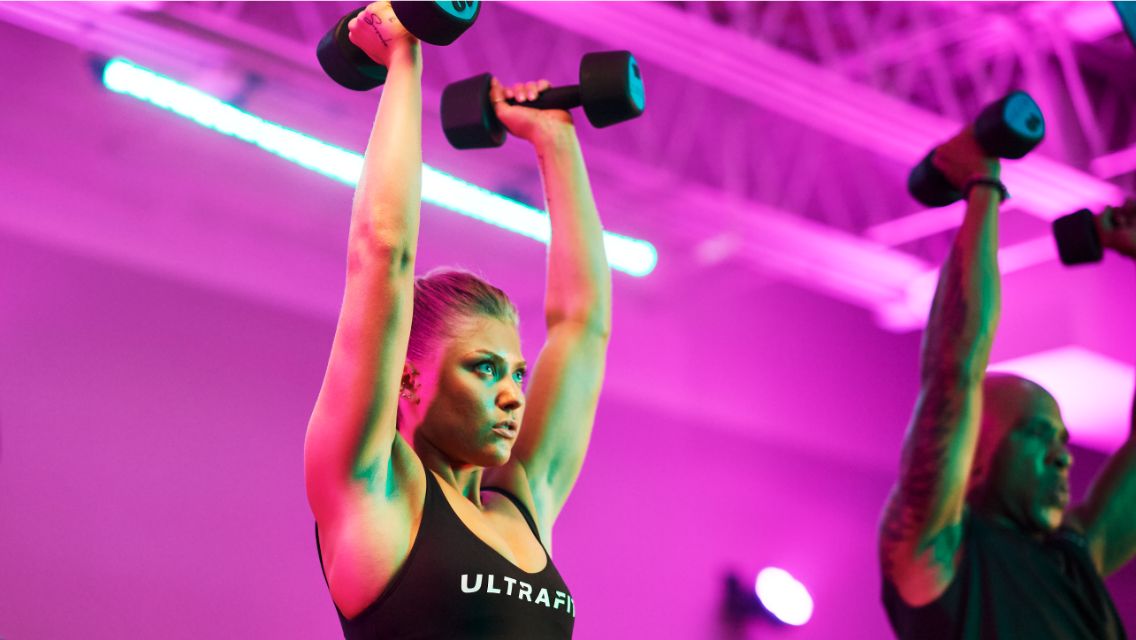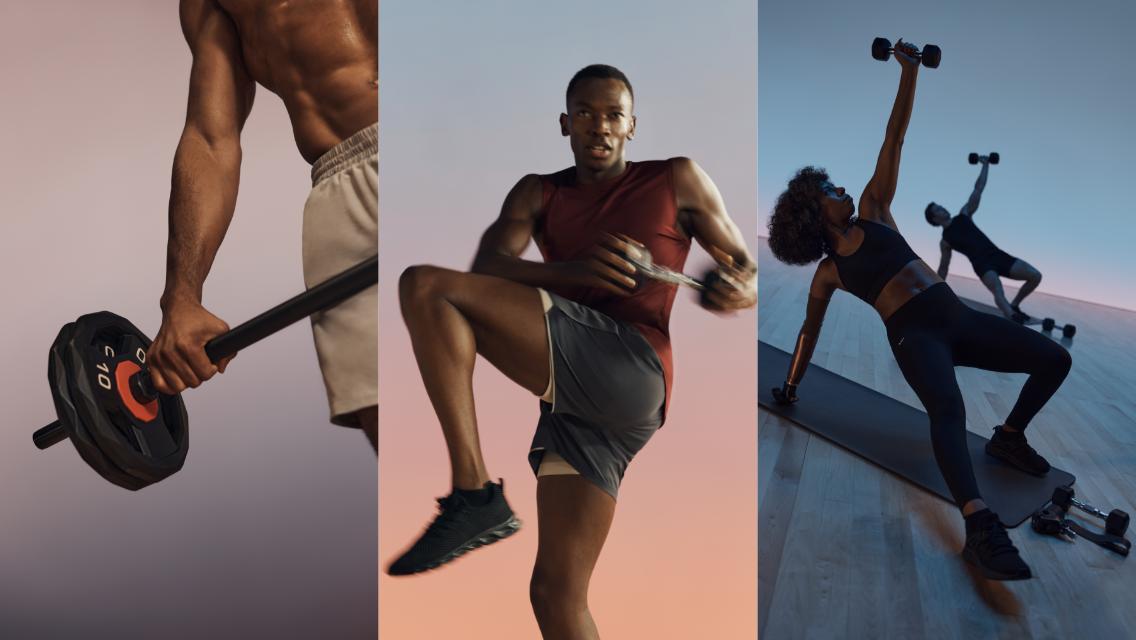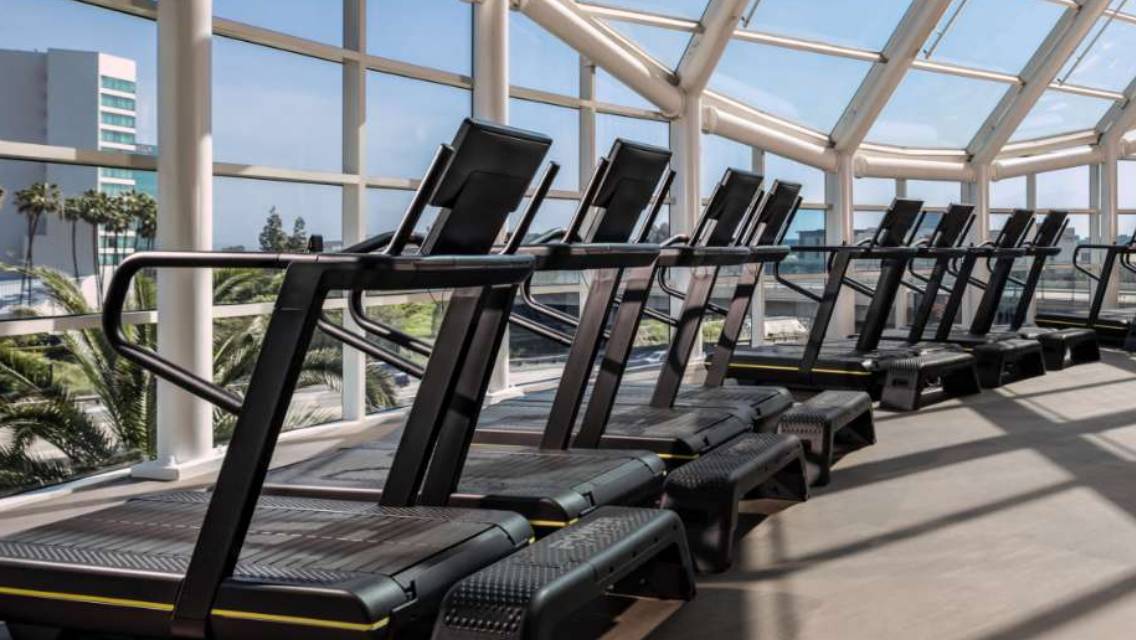Machines, cables, weights, bars, handles, clips — the amount of equipment on your health club’s workout floor can be overwhelming. And the strength machines can be particularly intimidating if you’re just starting to exercise or if you’re used to other workout modalities. Yet they can be a great entry point to strength training, which is a beneficial add to nearly all workout regimens.
“If you’re truly looking to get stronger in a trackable way or to build muscle mass, adding a few strength-building exercises per week to your routine is the way to do that,” says Joe Meier, Dynamic Personal Trainer at Life Time in Eden Prairie, Minn. “If you’re intimidated by the workout floor, try out a machine or two with a workout buddy. Once you gain confidence with one machine, add another until you’re able to work up to a full routine.”
We asked Meier, who’s also the author of the independently published book Lift for Life, to show us how to use four popular strength machines on the workout floor at Life Time.
1. Seated Row Machine
The seated row machine targets the major muscles in your back, including the lats, traps, and rhomboids, as well as your posterior deltoids and biceps. This exercise is great for improving your posture and shoulder strength, which can make everyday activities easier.
“I like to use the seated row machine because there are so many ways to do the exercise,” says Meier. “You can try out different handles or different ranges of motion and techniques to target various areas of your back.”
Work It Into Your Routine
For those looking to build strength or muscle mass, Meier recommends doing a version of a row two to three times per week. “You can do two to three sets of anywhere between four and 20 reps, depending on your goal and fitness level,” he advises. “Start out slow and work toward adding more weight.
“When you’re using the seated row — or any row — machine, focusing on a strong mind-muscle connection is a must,” Meier adds. “Really feel your muscles contract in your back and shoulders while you complete each rep.”
How to Use the Seated Row Machine
- Sit down at a seated-row station and grasp the handles with both hands. Here, Meier is using a medium-width neutral-grip handle.
- Begin with your torso fully upright, abdominal muscles engaged (imagine pulling your belly button toward your spine), and your arms extended straight in front of you.
- Draw your shoulders downward, then contract the muscles of your upper back (imagine squeezing a quarter between your shoulder blades) as you pull the handles toward your rib cage. Pause briefly, then slowly extend your arms to the starting position.
- Repeat for two to three sets of 10 to 12 reps, or as directed by your workout program.
2. Lat Pulldown
The lat pulldown machine works major muscles of the back, doing so via a vertical pulling motion. You’ll often see the machine set up with a straight bar handle, but you can switch out the handles or grips to work different muscles. Here, Meier demonstrates using it with the straight bar handle.
Work It Into Your Routine
Meier recommends adding lat pulldowns to your routine two to three times per week for strength building in your back and shoulders.
“The mistake people often make when using the lat pulldown with a straight bar is pulling down too far,” Meier says. “If the bar is past your chest and your forearms are angled forward, you’ve gone too far.”
How to Use the Lat Pulldown Machine
- Sitting with your feet flat on the floor, adjust the leg pads of the machine so they touch your thighs; adjust the weight to one that feels challenging for you.
- Stand to grasp the bar with a wide, overhand grip and then resume the seated position.
- As you pull down, tilt your upper back backward slightly and stick your chest out; aim to keep your forearms at the same angle as the cable. Pull down just far enough — toward the top of the sternum, just below the chin — that the major muscles of the back, especially the lats, contract fully.
- Straighten your arms to return the bar to the starting position.
- Repeat for two to three sets of 10 to 12 reps or as directed by your workout program.
3. Cable Machine Chest Press
A chest press works your pectoral muscles, anterior deltoids, and triceps, according to Meier.
“I like using the cable chest press machine because it allows for freedom of movement,” he explains. “For a beginner, it’s easier to get used to the stability required for a chest press without having to lift dumbbells or a barbell above your face and chest.”
Work It Into Your Routine
Meier recommends adding this exercise to your routine two to three times per week as part of an upper-body strength workout.
“I like to perform a superset — two exercises done back-to-back with minimal to no rest in between — with this machine and a seated row or lat pulldown. It’s a time-efficient way to work the major muscle groups of the upper body.”
How to Use the Cable Chest Press Machine
- Sitting at the machine with your feet flat on the floor, adjust the weight to one that feels challenging for you.
- Set the handle height, when applicable, so it feels comfortable on your shoulders (for many people, this is often right at chest height). If the handle height is too high or low, it may feel awkward or uncomfortable.
- Grip the handles on either side of you and then press the cables out in front of you; pushing your hands toward each other can help you feel the chest muscles more than just pushing straight forward.
- Pause briefly before slowly returning your arms to the starting position.
- Repeat for two to three sets of 10 to 12 reps or as directed by your workout program.
4. Leg Press Machine
The leg press is one of the most common squat-pattern movements, and it can be customized to your specific range of motion and ability. This exercise helps strengthen your quads, glutes, hamstrings, and adductors, which are all important muscles for everyday function.
“Even for those who do squats, the leg press can be a useful addition because people likely push themselves harder on the leg press versus a free weight squat due to the ease of technique,” Meier explains. “It can also be more comfortable for those who aren’t able to hold weight on their backs during a regular squat.”
Work It Into Your Routine
Meier recommends adding the leg press to your workout one to two times per week as your squat-pattern exercise. When you’re starting out, choose a weight you can perform for at least 10 to 12 reps with per set.
No matter what type of leg press machine you use, make sure it’s set up correctly. Adjust the machine so it allows the maximum range of motion you can comfortably handle and the ability to perform each rep to the same depth. Here, Meier demonstrates adjusting the safety mechanism. As you move it upward, it decreases the range of motion.
How to Use a Leg Press Machine
- Adjust the machine to a weight that feels challenging for you.
- Sit down with your back against the seat. Place your feet about hip- to shoulder-width apart in the center of the platform.
- Keeping your core engaged, feet flat, and butt on the seat, press the weight away from you, keeping your knees tracking with your toes. Fully extend your knees but be careful not to lock them out completely.
- Pause briefly, then slowly reverse the movement to lower the weight with control. Keep your feet flat and your lower back in contact with the seat.
- Repeat for two to three sets of at least 10 to 12 reps or as directed by your workout program.
“Do not be afraid to ask any fitness professional who isn’t with a client to show you how to use a machine,” Meier emphasizes. “Life Time trainers are available to help anyone who needs assistance on the workout floor. If you’re completely new to using strength machines or free weights, the Dynamic Personal Trainers at your club will be happy to spend a complimentary session with you to ensure you know how to use the equipment that interests you. Simply talk to someone at your club’s Personal Training Desk or the front desk, and they will help connect you with a trainer.”
